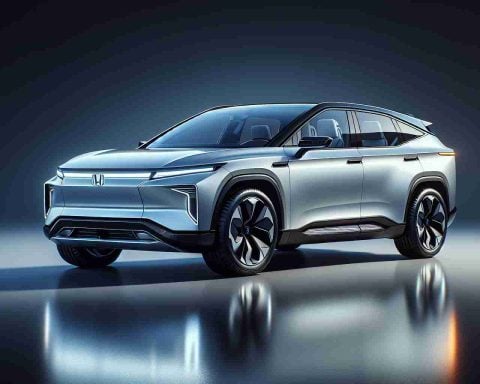- BorgWarner is closing Akasol’s Michigan plants, impacting 188 employees as operations move to Seneca, South Carolina.
- The closure affects facilities in Hazel Park and Warren that focused on advanced lithium-ion battery production for electric vehicles.
- The decision aligns with BorgWarner’s corporate strategy to streamline operations and enhance production efficiency.
- The Michigan Department of Labor and Economic Opportunity, along with local leaders, has been informed as per WARN Act requirements.
- This shift challenges Michigan’s auto heritage, highlighting the need for economic diversification and industry adaptation.
- The situation underscores the importance of agility and innovation in a rapidly changing global economy.
A surprising move by a major player in the electric vehicle sector has taken Michigan’s industrial landscape by storm. As the early spring blossoms hint at renewal, the atmosphere darkens for 188 employees as Akasol’s Michigan plants shutter permanently this April. Bold decision-making by BorgWarner, who acquired the firm in 2022, orchestrates this change, steering all operations to their South Carolina facility in Seneca.
Dust and echoes will soon fill the airy expanses of Hazel Park and Warren sites, once bustling hubs of innovation. Here, cutting-edge lithium-ion batteries powering the future of transportation once took shape. This strategic pivot, though part of broader corporate streamlining, casts a shadow over many households now grappling with sudden uncertainty.
Notifications have already rippled through the community, reaching the Michigan Department of Labor and Economic Opportunity along with local leaders. Observers familiar with the Worker Adjustment and Retraining Notification (WARN) Act know this as a standard obligation for firms undergoing such significant transformations. However, for the workers, the reality is anything but routine.
For BorgWarner, famed for engineering marvels showcased across nearly every major auto manufacturer in the world, this is a calculated stride towards a leaner, potentially more effective production model. However, it leaves a vacuum in Michigan, a state with an unwavering auto heritage now forced to reflect on future diversification and resilience.
The closure of Akasol’s Michigan plants is not just a business decision but a vivid instance of our ever-evolving economic landscape. It serves as a poignant reminder for communities reliant on singular industries to adapt and innovate continuously. As the global economic dance accelerates, the ability to pivot with agility has never been more crucial.
Michigan’s Auto Industry Transformation: What BorgWarner’s Akasol Closure Means for the Future of EV Manufacturing
Understanding the Akasol Closure: How-To Steps & Life Hacks
The decision to close Akasol’s Michigan plants reflects a strategic pivot by BorgWarner. Here are steps companies and communities can take in response to such industrial shifts:
1. Comprehensive Analysis: Conduct a thorough review of economic trends and potential opportunities in the EV market.
2. Job Transition Programs: Implement retraining programs for affected employees to aid the transition to new roles in emerging industries.
3. Community Forums: Engage with local communities to discuss economic diversification strategies and gather input.
4. Leverage State Resources: Utilize state and federal programs for worker retraining and relocation assistance.
5. Networking Opportunities: Encourage networking events to connect former employees with potential new employers.
Real-World Use Cases & Industry Trends
The move to centralize production at the Seneca, South Carolina facility aligns with the industry trend of consolidating operations to minimize costs and optimize efficiency. With the rapid growth of the electric vehicle (EV) market, manufacturers are streamlining processes to compete aggressively on a global scale.
– Trend: Increasing demand for electric vehicles worldwide positions companies like BorgWarner to scale-up production in cost-effective manufacturing hubs.
– Use Case: Seneca’s consolidated plant could benefit from economies of scale, reducing per-unit costs of battery manufacturing, thereby influencing market pricing and adoption rates.
Reviews & Comparisons
In the competitive EV battery sector, the integration of Akasol’s operations in South Carolina can be benchmarked against competitors:
– Strengths: BorgWarner’s engineering prowess offers innovation in EV technology, providing advanced battery solutions comparable with leading brands like Tesla and Panasonic.
– Weaknesses: Transition periods can disrupt supply chains and affect client relationships during relocation.
Controversies & Limitations
Despite the strategic benefits, the closure raises significant social and economic concerns:
– Criticism: Affected communities may criticize the loss of jobs and economic stability in Michigan, prompting calls for corporate responsibility.
– Limitations: Redistribution of talent can lead to skills gaps in specific regions without adequate retraining programs.
Market Forecast & Industry Trends
The EV battery market is expected to grow at a CAGR of over 20% in the coming years, driven by increasing environmental regulations and consumer demand for eco-friendly vehicles.
– Forecast: BorgWarner’s consolidation is a proactive measure to capture a larger market share in this expanding industry.
– Trend: The shift towards centralized, high-efficiency plants is expected to continue as manufacturers seek to enhance competitiveness.
Recommendations for Affected Workers and Industries
1. Upskilling: Invest in acquiring skills relevant to the growing fields of renewable energy and sustainable technologies.
2. Networking: Connect with professional groups and industry forums to explore new opportunities.
3. Community Support: Advocate for local economic development initiatives that diversify industry presence in Michigan.
For additional industry insights and forecasts, explore domains such as Bloomberg and Reuters.
This closure serves as a challenging yet instructive development in Michigan’s industrial landscape, emphasizing the need for adaptability and resilience in economic planning.



















